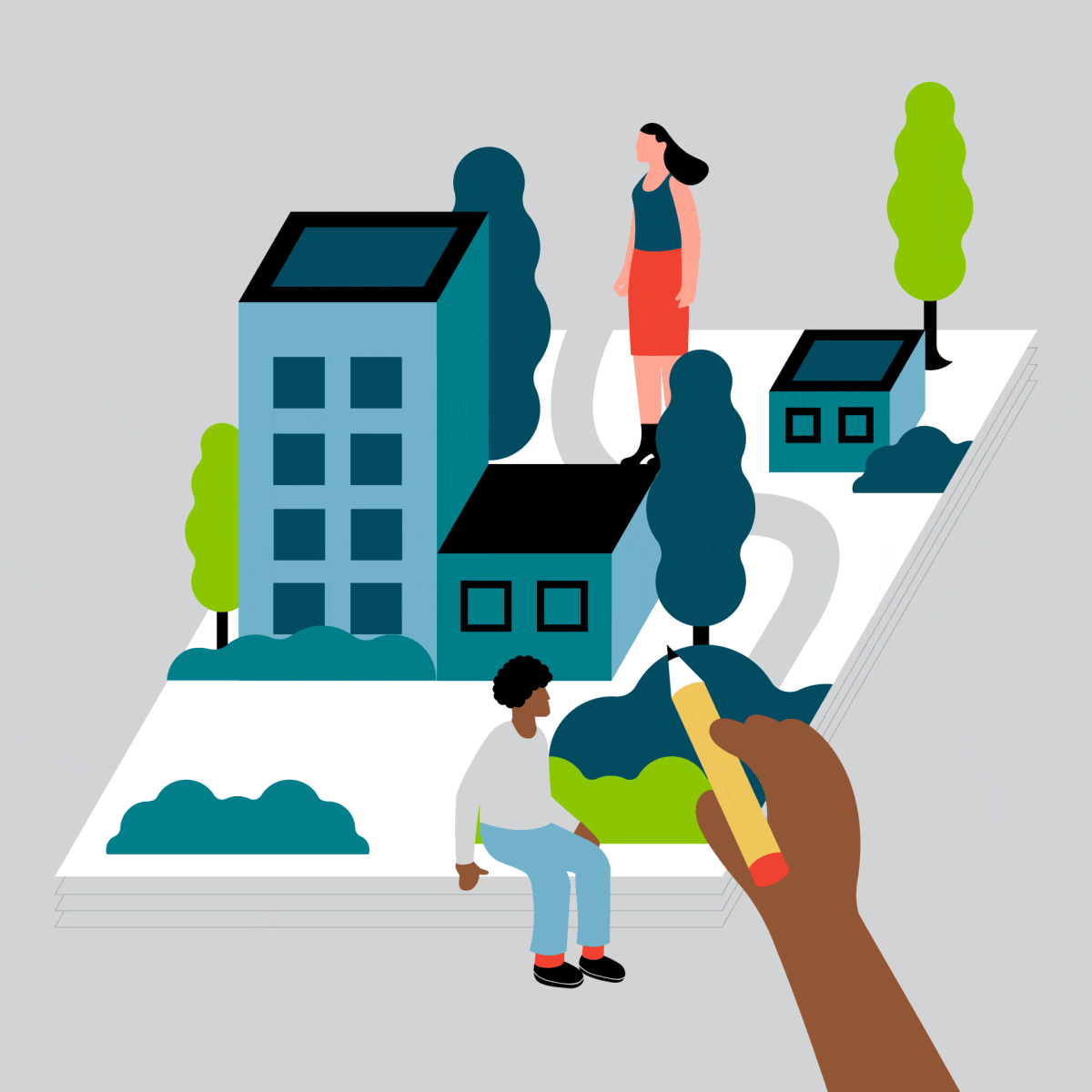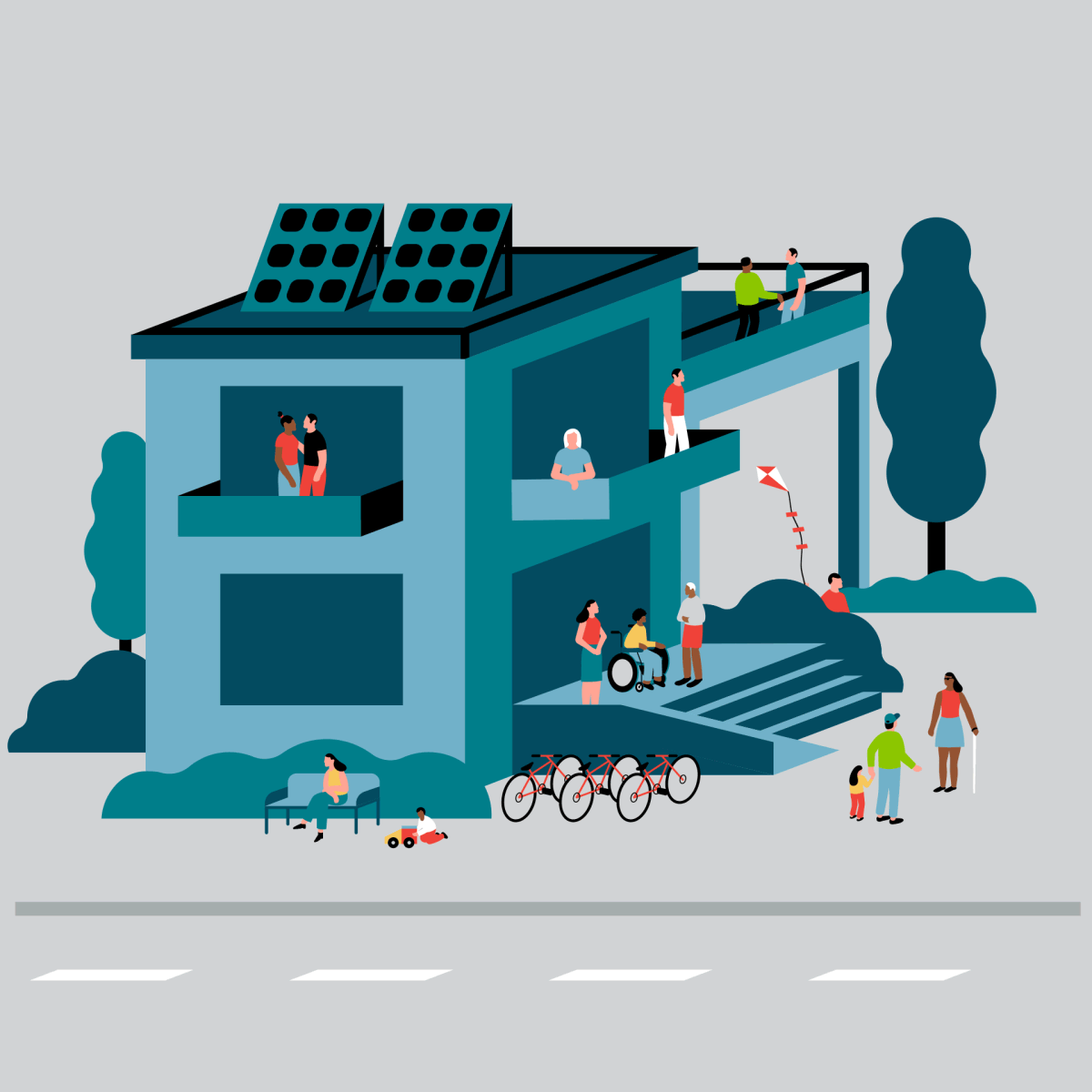
Architects don’t just design buildings. They design systems that can work equitably for communities, cities, and regions using the same design methodology—just on a larger scale. It's a key reason why mayors and government leaders turn to architects to tackle big challenges like infrastructure, public health, security, and the environment.
From protecting towns along the Mississippi River to renovating buildings to rejuvenate communities, here's how they do it.
1. Architects engage the community to design successful solutions
In every project, architects prioritize engaging community residents: Understanding and internalizing their needs before designing solutions.
In Jackson, Mississippi, community leaders tried for decades to offer new economic opportunities for residents of its Midtown neighborhood, which had a poverty rate of 50%. After various nonprofits failed to make a dent, Duvall Decker Architects helped civic leaders develop a new approach for revitalizing the community. They started by hosting neighborhood meetings, knocking on doors, and even running TV ads to ensure local residents played an active role in the redesign process. Drawing on community feedback, the architects designed 62 residential homes and other structures to reflect the needs people expressed, like replacing liquor stores with community centers and helping foster community pride, which gave rise to a new charter school, art galleries, businesses, and a popular bike tour.
“Working with Roy and Jocelyn [of Duvall Decker Architects], I developed a really good appreciation, because they held a series of community meetings that allowed everyone to have input,” said Derrick Johnson, president of the Mississippi NAACP. “You move away from the concept of gentrification, and you move toward the concept of inclusive development for the current residents.”
 2. Architects apply design thinking to solve problems
2. Architects apply design thinking to solve problems
After assessing and internalizing residents’ wishes and requests, architects begin the next phase: Designing solutions that prioritize community needs. A key component of this phase is environmental stewardship. To fully serve communities, architects must integrate clean and renewable energy sources and healthy, sustainable building principles like passive design, making communities more resilient, inclusive, self-reliant, sustainable, and prosperous.
In Buffalo, New York, for example, the city wasn’t sure what to do with a series of defunct grain elevators and silos. Aiming to revive the economy while turning a former industrial corridor into a beautiful destination, architects at Studio V launched a series of bioremediation projects to create gardens and biodiversity, transforming the area into Silo City, a compound that includes affordable housing, galleries, and maker spaces that connect to the surrounding city in new ways in order to grow with it. “Silo City is a vision for the adaptive reuse of the largest collection of grain elevators in the world into an arts and cultural campus on the Buffalo River,” said Studio V Architecture, the team behind the project.
 3. Architects ensure accessibility for all
3. Architects ensure accessibility for all
Ultimately, the architect’s most important goal is to create an inclusive and sustainable design that benefits everyone, an objective perhaps best exemplified by Emancipation Park in Houston. Founded by formerly enslaved people in 1872, the ten-acre site in the city’s Third Ward was for years the only park open to Black residents. It fell into disrepair due to underfunding and needed a refresh after more than a century of use.
In 2017, the Perkins+Will architecture firm worked with community leaders—as well as public, private, and philanthropic partners—to reimagine the park (the oldest in the state), hoping to spark a neighborhood renaissance through design. After a series of community engagement meetings, the architects and residents created a new vision together, resulting in a revived green space with a cultural center, a recreational hub, a theater, and more.
“It’s not just about the location. It’s about the hopes, the dreams, and the promise that regardless of how you started and when you got there, you can go beyond,” said Sylvester Turner, the mayor of Houston. “Quite frankly, there’s an Emancipation Park in all of us.”
—
Want to learn more? Connect with one of the 94,000+ AIA architects to discover ways to create resilient and sustainable communities that benefit every citizen—for every budget.